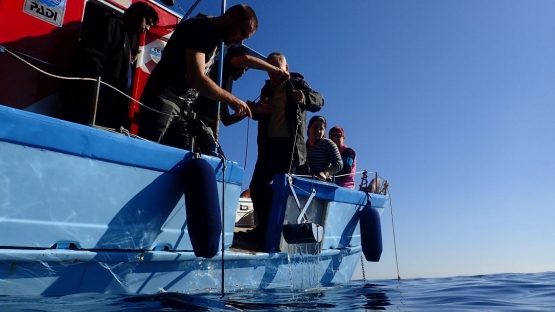The year 2016 marks the 30th anniversary of the addition of the Marine Environmental Studies Laboratory (MESL) to the IAEA’s Environment Laboratories. MESL was set up by the Agency to assist Member States to monitor marine pollution as part of UNEP’s Regional Seas Programmes, with an initial focus on the Mediterranean. As the only marine laboratories in the UN system, the Environment Laboratories in Monaco were a natural choice to establish a hub for marine pollution research. Through this collaboration with UNEP, MESL has organised, to date, 54 training courses and 34 Proficiency Tests to strengthen pollution monitoring in the Mediterranean.
Erik Solheim, the Executive Director of UNEP, highlighted in his message to the IAEA on its 60th anniversary, that “science and technology are fundamental to find solutions to the world’s biggest challenges”. He added that the partnership between the two agencies has enabled them to “better monitor marine pollutants” and “better assess the impacts of climate change”.
MESL focuses on pollutants in the marine environment such as toxic trace elements (mercury, cadmium) and Persistent Organic Pollutants (POPs), such as the pesticide DDT, which were widely used in the 1960s and 1970s and, due to their slow degradation rates, can remain in the ocean for decades.
MESL acts as the Regional Analytical Centre for the MED POL Programme, which is the marine pollution and control component of the Mediterranean Action Plan. Today the laboratory provides expertise to Member States, not only in the Mediterranean region but across the globe, to implement marine pollution monitoring programmes, to assess the quality of the marine environment and to improve seafood safety through the detection of contaminants.
To accurately monitor pollution levels and enhance the capacity of Member States laboratories, MESL has developed a comprehensive approach, which includes Proficiency Tests to check laboratory performance, the development of fit-for-purpose analytical methods, the training of scientists on the analysis of hazardous contaminants and on the establishment of Quality Assurance / Quality Control procedures in laboratories. Training courses include theoretical and practical components, such as hands-on workshops on sampling techniques at sea, sample preparation, and the application of analytical methods for the determination contaminants.
“Quality environmental data is needed to help policy-makers make science-based decisions to protect the marine environment and to ensure the sustainable delivery of ecosystem services,” said Mr Michail Angelidis, Section Head of the Marine Environmental Studies Laboratory. “Good data is fundamental for good decisions” he added.
Since 1986, several recommended analytical methods for the determination of contaminants in marine samples have also been jointly developed by the IAEA’s Environment Laboratories in close cooperation with UNEP, IOC-UNESCO, FAO and WHO.
After 30 years of a successful and fruitful collaboration, the IAEA Environment Laboratories, the UNEP Mediterranean Action Plan and UNEP’s Regional Seas Programme, will continue to work together to assist Member States to achieve the Sustainable Development Goals on Oceans and Biodiversity.





